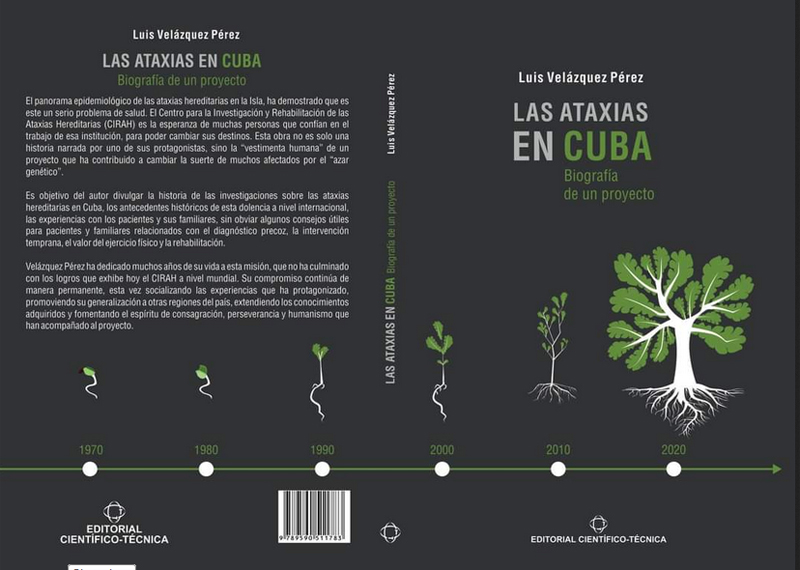Book on Ataxias in Cuba presented in Holguín
- Written by Lourdes Pichs Rodríguez
- Published in Holguin
- Hits: 701

“Ataxias in Cuba, biography of a project” by DrCs Luis Velázquez Pérez, was presented at the Center for Research and Rehabilitation of Hereditary Ataxias (Cirah) in Holguín, as an initiative of the Provincial Book Center, to bring specific bibliographies closer to target audiences.
The volume by the President of the Cuban Academy of Sciences and founder of Cirah addresses in eight chapters the history of research on this hereditary degenerative disease, whose prevalence in Cuba is 8.91 cases per 100,000 inhabitants, the highest at international level.
According to the MSc Mariela Góngora Marrero, the book published by the Scientific-Technical Editorial, "shares the history of research on hereditary ataxias in Cuba, the historical background of this disease at the national and international level, the experiences with patients and relatives, and also contains useful advice related to early diagnosis, early therapeutic intervention and the importance of rehabilitation”.
From her personal experience, the journalist Hilda Pupo, diagnosed with SCA2 more than 25 years ago, wrote the prologue of the book in which she recognizes the Holguín scientists, who led by Dr. Luis Velázquez, "have given themselves in body and soul, to discover the secrets of that illness; and they have always had two key words on their lips: optimism and hope”.
SCA2 is the most frequent molecular form found in the national territory, grouping the largest number of patients in the province of Holguín, whose prevalence and incidence rates have not been surpassed by any other nation.
The national epidemiological study carried out in 2017 and 2018 made it possible to define the existence of 848 cases (87.42 percent), belonging to 124 families diagnosed with SCA2; as well as 9 thousand 791 descendants at risk, which indicates that this disease constitutes a serious health problem in our country.
This is a family condition inherited in an autosomal dominant manner, so each descendant of a patient has a 50 percent chance of inheriting the SCA2 gene.
